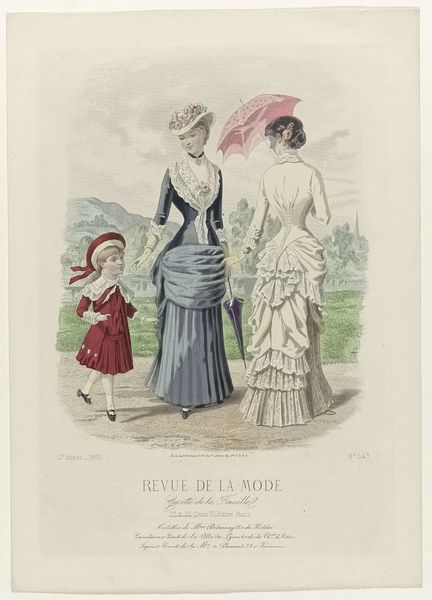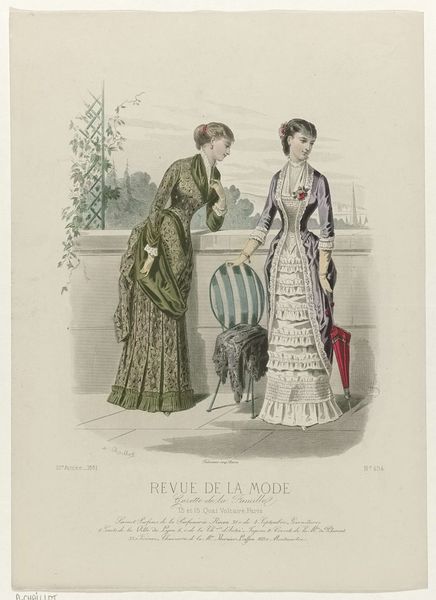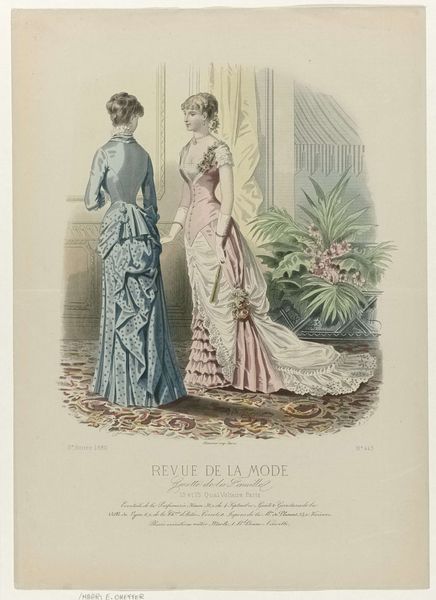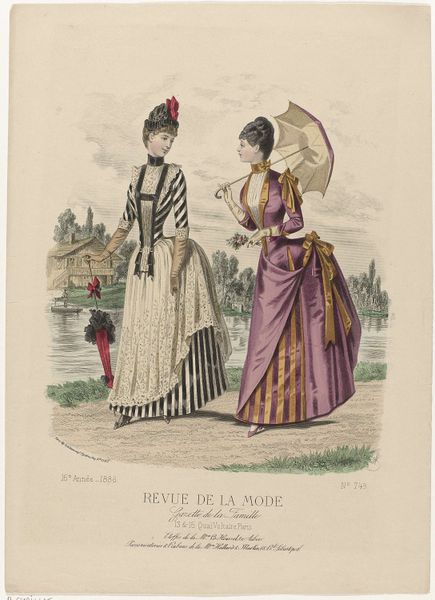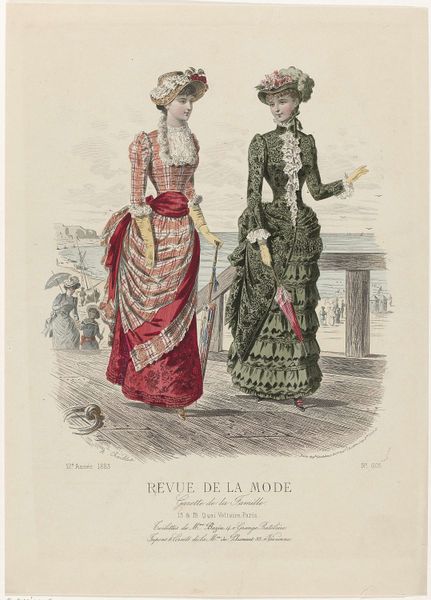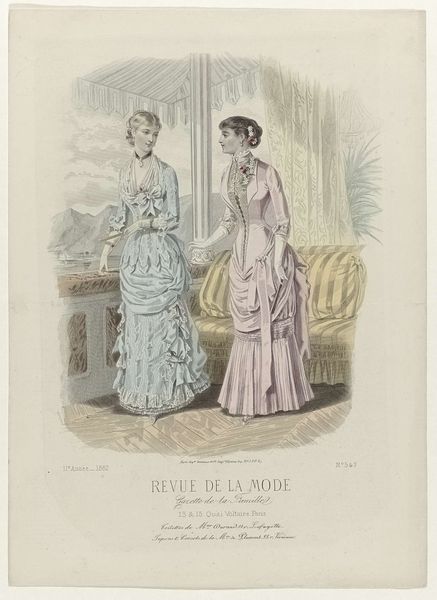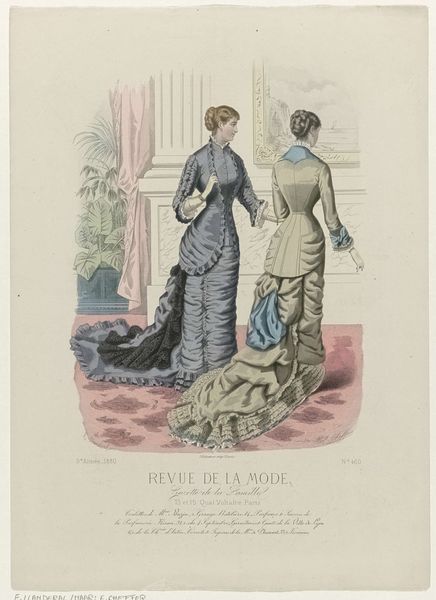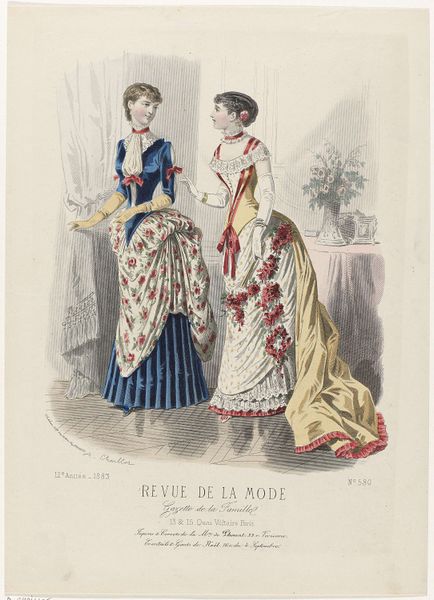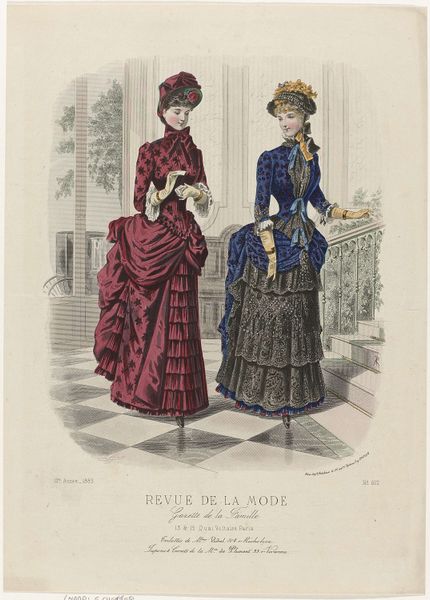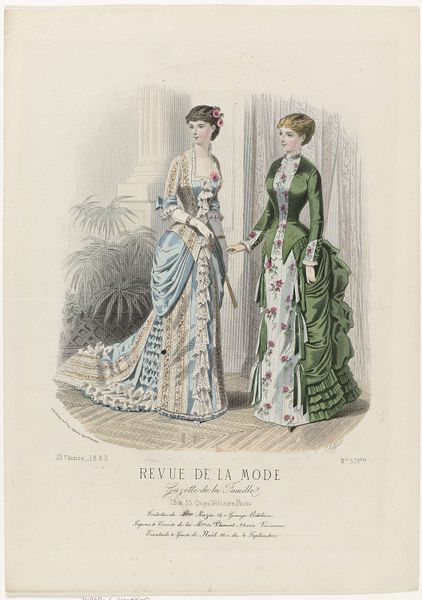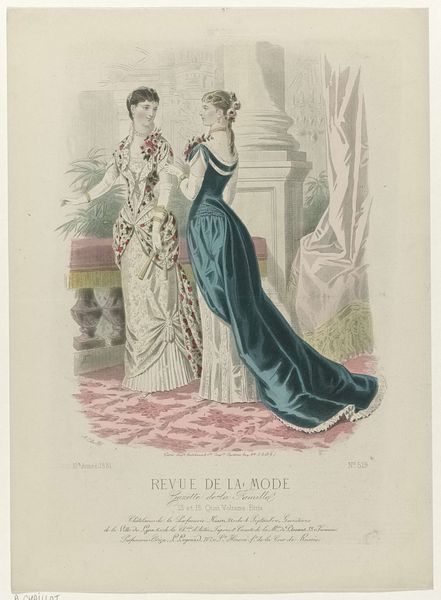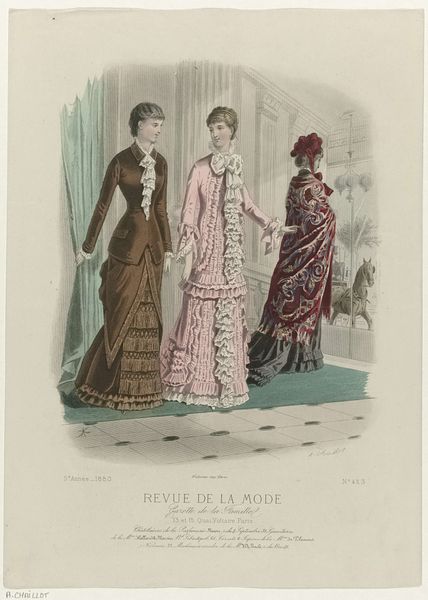
Revue de la Mode, Gazette de la Famille, dimanche 22 mai 1881, 10e année, No. 490: Gants de la Parfumerie Ninon (...) 1881
0:00
0:00
Dimensions: height 370 mm, width 270 mm
Copyright: Rijks Museum: Open Domain
Curator: This is an etching and print by A. Chaillot titled "Revue de la Mode, Gazette de la Famille," created in 1881. It depicts two women in elaborate dresses with a child in a sailor suit. It seems like a fashion plate, but the background looks like a real landscape with a chateau in the distance. Editor: Yes, it definitely feels posed, like an aspirational image of bourgeois life. How should we interpret it beyond its surface presentation? Curator: Look closely at the dresses. Consider the intense construction of the garments, emphasizing the female form through corsetry and layered fabrics. How does this impact your understanding of gender roles at the time? Editor: It seems constricting, almost like a performance. The women are presenting themselves in a very specific, almost artificial way. The child also appears as if costumed rather than naturally dressed. Curator: Exactly. Think about the labor involved in creating these garments and who likely performed that labor. Consider the social structures that enabled this display of wealth and leisure. The Revue de la Mode wasn't just about aesthetics; it reinforced social hierarchies and ideals. What does the relationship of these constructed roles have to do with the male gaze? Editor: That’s a powerful point. It challenges us to question the gaze behind this seemingly harmless fashion plate. The male gaze perpetuates objectification. Curator: Absolutely. It encourages us to move beyond simply appreciating the aesthetic qualities and start considering the work as a social document. Editor: That’s helpful, repositioning it as a critique, maybe of the strictures placed on women. Curator: It's a place to begin our conversation and understand art's broader relationship with gender, class, and power. Editor: Thank you! I will definitely keep those ideas in mind.
Comments
No comments
Be the first to comment and join the conversation on the ultimate creative platform.
